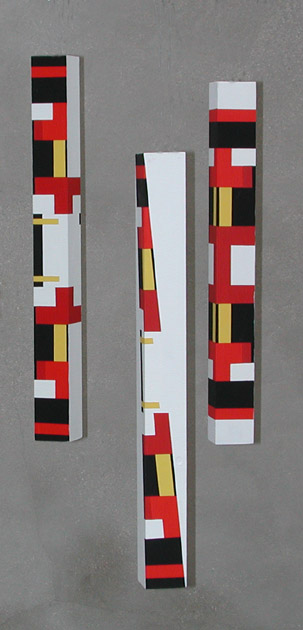|
AND 3D SYMMETRIES AND FRACTALS PART 2 JUDITH NEMís
4 FRACTAL SYMMETRY The same visual words as defined by the random permutations outlined in Part 1 are used to further the concept of symmetry to understand the visual impact of scaling. A simple imbedding algorithm is applied to create visual meta-words that could in turn be used to generate (meta) sentences similarly to the approach described in Section 3 of Part 1. These imbedded words could then be used to analyze the impact of up/down scaling. Figure 7 shows the case of central fractal symmetry while Fig. 8 illustrates that of skewed fractal symmetry. In both case the same self-similarity principle has been used. .
Figure 7
Figure 8
5 THE THREE-DIMENSIONAL CASE
Figure 9 Figure 10 The very same principles are used in the 3D case. These hanging columns
(függvény in Hungarian, dependent in English),
shown in Fig 9 and 10, attempt to generalize what has been put forth in
the preceding sections.
Acknowledgement. The
author is indebted to Mr. András Szöllasi-Nagy for his advice
and continuous moral support throughout the work of this research project.
References
|



